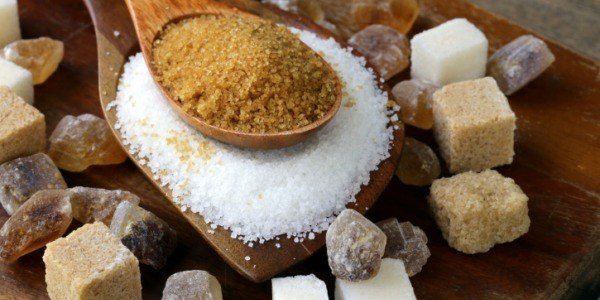Sugar

It can be said with a high degree of certainty that there is hardly a person in the world who has never tasted sugar. Its beneficial properties, as well as its possible adverse effects, are among the main topics of numerous scientific publications and experiments.
Sugar – this is the popular name for sucrose, which is the most common disaccharide in nature. It is included in the composition of many fruits, but also in some vegetables.
The content of this substance is particularly high in the various types of sugar beet and cane, which are used for the industrial production of table sugar.
In terms of processes in the human body, sucrose is easily broken down in the digestive system and then absorbed in the intestines and enters the bloodstream.
It is interesting that sugar and salt are excellent preservatives and at a certain concentration, they are able to slow down and even prevent the reproduction of pathogenic bacteria.
The calorie content of sugar is very high, while the protein and fat content is equal to zero.
Nutritional value per 100 grams
• Mono and disaccharides – 99.8 grams;
• Mineral composition – 0.1 gram of it was found to contain the following mineral substances:
– Iron – 0.3 mg;
– Potassium – 3 mg ;
– Sodium – 1 mg;
– Calcium – 3 mg;
• Water – 0.1 gram;
Sugar – useful properties
Relatively recently, Polish doctors conducted a number of independent studies, as a result of which they came to the conclusion that the human body deprived of sucrose will not be able to survive for long.
This is explained by the fact that sucrose has the ability to activate blood circulation in the brain and spinal cord, therefore, in case of complete rejection of this food product, the development of sclerotic changes in the human body is possible. And precisely because of this, the health benefits of using sugar are obvious.
In diseases of the liver and spleen, patients are often recommended to adhere to a diet that includes foods with an increased content of sucrose, and in this case the benefit of sugar cannot be doubted.
In addition, people who love sweets are much less likely to suffer from arthritis compared to those who are skeptical about the use of the so-called “white poison”.
Contraindications
Speaking of the dangers of sugar, it is important to know that it comes in two types, the so-called “hidden” and white crystalline. The first type is found in almost all fruits, grains and some vegetables that taste sweet like carrots and beets.
Ballast substances suppress the rapid absorption of sucrose in the intestines, and so it gradually penetrates into the bloodstream, and thus the pancreas is not so burdened if a person eats something very sweet and in large quantities.
White crystalline or external sucrose, which is used in the production of various sugar products, sweets, cakes and pastes, has completely different properties.
Some foods naturally contain simple sugars, such as honey, for example.
Precisely this type of sucrose is considered unfavorable for both the figure and the teeth, and therefore it is necessary to use it wisely.
There is also an opinion among some scientists that the consumption of white crystal sugar in large quantities may trigger some allergic reactions and disorders in the function of the immune system.



